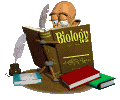
Classification

Chapter Objectives
At the end of this unit students
will be able to
1. describe Linneaus’ role in developing the modern system of
naming organisms.
2. summarize the scientific system for naming a species.
3. list the seven levels of biological classification.
4. list the characteristics that biologists use to classify organisms.
5. summarize the biological species concept.
6. relate analogous structures to convergent evolution and homologous
structures to divergent evolution.
7. describe how biologists use cladograms to determine evolutionary
histories.
8. identify the characteristics used to classify the 6 kingdoms of living
organisms.
9. differentiate Eubacteria from Archaebacteria.
10. distinguish among unicellular, colonial, and multicellular life
forms.
Chapter Terms
| Classification of Organisms | Kingdoms of Life |
| taxonomy binomial nomenclature species genus family order class phylum kingdom domain biological species phylogeny convergent evolution analogous character cladistics ancestral character derived character cladogram evolutionary systematics phylogenetic tree |
colonial organism aggregation multicellular differentiation tissue organ organ system protist hypha vascular tissue invertebrate vertebrate |
Animated
Graphics Courtesy of

Jo's World